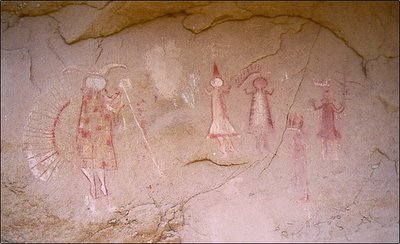Much of this seasonal mood has roots in the celeb
 ration of Winter Solstice, which takes place every year in the northern hemisphere on December 21 or 22. On that day, the daytime hours are the shortest they will be all year while the nighttime is at a maximum. For the ancients, this indicated the disappearance of the nourishing, life-sustaining sun and yet it also meant that in the days following the Solstice, the Sun would rise and strengthen again, bringing the promise of spring and new life. The Winter Solstice pledges the same to us today. It presents an opportunity to release that which we want to leave in the past and set our intention for the coming year.
ration of Winter Solstice, which takes place every year in the northern hemisphere on December 21 or 22. On that day, the daytime hours are the shortest they will be all year while the nighttime is at a maximum. For the ancients, this indicated the disappearance of the nourishing, life-sustaining sun and yet it also meant that in the days following the Solstice, the Sun would rise and strengthen again, bringing the promise of spring and new life. The Winter Solstice pledges the same to us today. It presents an opportunity to release that which we want to leave in the past and set our intention for the coming year.
Many aspects of ancient Winter Solstice festivals live on in traditions of the season. The Roman midwinter holiday, Saturnalia was a merry time in which homes were decked with boughs of laurel and evergreen while friends visited each other with fruit, cakes and other treats. In Scandinavia, people listened to minstrel-poets singing ancient legends while the yule log, which was thought to magically help the sun shine brightly, burned in the family hearth.

Burning indoor hearths and candles were an aspect of numerous winter solstice festivals and continue to be a part of the season today. In Iran, the Winter Solstice is observed through the Yalda festival, when a huge bonfire is kindled to symbolically stimulate the sun to grow stronger. For the Hopi tribe of Native Americans, the month-long Soyal festival includes many rituals to honor lights shining amid darkness, a theme echoed by holidays such as Christmas, Chanukah and Kwanzaa. Common to many winter solstice festivals is the gathering of friends and family to feast and spend time together. China's winter solstice festival is called Dong Zhi and is marked by plentiful winter foods.
For many in northern climates, Winter Solstice is an opportunity to celebrate the cyclical nature of our lives. You can honor the New Solar Year by creating your own Winter Solstice ritual incorporating both darkness to represent the end of a year and light, to mark the rising sun. Perhaps you will want to close off the artificial lamps and light candles or a bonfire, ringing in the solstice as in ancient times. Maybe you will choose to contribute some time to helping those having a hard winter or just spend some time meditating on how to bring more light into the world. Whatever, you do to commemorate this crucial time of year, remember that winter solstice is all about the hope for a bright and warm future.
I have journaled for many many years... since 1980 consistently, sporadically prior to that. I have journal that go back to when I was 10.

I go thru my journals specifically to look at the cycles and themes of my life, that surround the Soltices and Equinox. There are several major lessons that are recurring themes in my life. More about that later...
If you want to create your own ritual for the winter solstice, keep in mind that many modern observances involve symbols for three important actions: remembering and appreciating the year that is ending, letting go of the "bad stuff" in the past that we want to leave behind, and then setting an intention or a direction for the new year.
Orange's are the colors for the the Day.
I have honored the cycles with awareness since 1988.
Soltice exactly occurs today at:10:35 PST.
You can learn more at Candlegrove on the exact time. They have a beautiful and very informative site that is dedicated to Winter Solstice.
So for now...Happy Yule! I am off to cleanse in the beautiful rain in my back yard to remove my old wheel and build a new one.
Son RISE!!! I will also observe Son Set....
In Love and Gratitude to all of YOU.
Blessed Be...Clance'